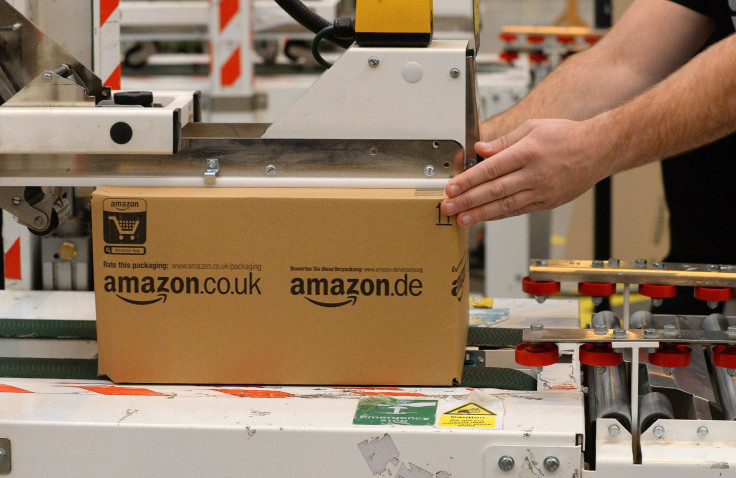Amazon's Latest Effort To Take On The Competition And Regulators

Third-party merchants already account for 58% of sales on Amazon's (NASDAQ:AMZN) marketplace. That's thanks in large part to its Fulfillment by Amazon (FBA) program, which allows sellers to ship inventory to the company's warehouses for storage and Amazon automatically ships out an item when a customer buys it.
The e-tailer is testing a new program that takes FBA a step further called Sold by Amazon. SBA gives Amazon full control over the price of items sold by third-party merchants in an effort to maximize sales. Amazon will provide a minimum guaranteed payment per unit to the merchant to ensure merchants are still able to meet their profit targets, but Amazon will use its dynamic pricing engine to offer optimal prices on its marketplace.
The move could enable Amazon to offer better prices on millions of items for its customers while attracting new merchants to its platform. Moreover, it could help fend off regulatory scrutiny into potential antitrust practices.
The limitations of Fulfillment by Amazon
Fulfillment by Amazon is one of the core pillars of the online retailer's business. While Amazon takes control of the warehousing, shipping, inventory tracking, returns, and other behind-the-scenes parts of online retail, the merchant is still largely responsible for selling its products. That means Amazon has very little control over the price of most of the items sold on its marketplace.
Amazon used to have language in its FBA agreement that prevented merchants from listing their items elsewhere at a price lower than what they list them on Amazon's marketplace. The company removed that language after Sen. Richard Blumenthal of Connecticut criticized the clause. Amazon uses less strict language now, discouraging merchants from pricing that "harms customer trust."
The new Sold by Amazon program is an attempt to make everyone happy. Merchants are guaranteed a minimum payment for each item sold and can list items at lower prices on other marketplaces or their own website. Amazon is able to remain competitive by lowering the price of the item if it feels it'll generate incremental sales and profits. And if Amazon thinks a higher price will produce more profits, it's just as capable of increasing the price for its merchants' products.
The new program could open the door for more merchants to join Amazon's marketplace. Some merchants will be attracted to the hands-off pricing and guaranteed payouts. Others may find greater flexibility in listing their products on other marketplaces without fear of repercussions from Amazon, which accounts for the bulk of online retail sales. More merchants could mean more demand for Amazon's advertising products, which would enable the company to make up for any margin compression on potentially lower-priced product sales.
Fending off the competition
If Amazon gains more control over product pricing on its marketplace, that gives it a greater ability to compete with the likes of Walmart (NYSE:WMT)and Target (NYSE:TGT). That's particularly poignant in lower-priced convenience items, a new focus of Amazon's one-day Prime shipping efforts.
Amazon stands to gain Prime members by offering better prices and convenience than Walmart or Target. And while both big-box retailers have answered back with expedited shipping options of their own, Prime offers greater product selection and additional benefits over its competitors' options. If Amazon can also offer better prices, the competition won't stand a chance.
If Amazon thinks offering lower prices on certain products from third-party merchants will convince more customers to sign up for Prime, it may be willing to take a loss on those sales. The merchant will still receive the guaranteed minimum, and Amazon stands to benefit from subscription revenue and increased loyalty for other purchases from the potential incremental Prime membership. That's a win-win.
Walmart and Target don't have significant supplementary sources of income. Target's Shipt same-day delivery service generates a small amount of revenue for the company, but the bulk of its store-fulfilled orders are either shipped out of the back of the store to the customer's door or the customer comes to the store to pick it up. Walmart's attempt at a paid shipping service fell flat, and the company eventually scrapped it in favor of free two-day shipping for everyone with no membership required.
All of this is predicated on getting a significant number of merchants to sign up for Sold by Amazon. While the service will be appealing to some merchants, it could take some time for Amazon to convince enough sellers to relinquish control of their pricing for it to have a big impact on its business. In the meantime, the mere existence of the program should help combat antitrust accusations.
This article originally appeared in the Motley Fool.
Adam Levy owns shares of Amazon. The Motley Fool owns shares of and recommends Amazon. The Motley Fool has a disclosure policy.




















